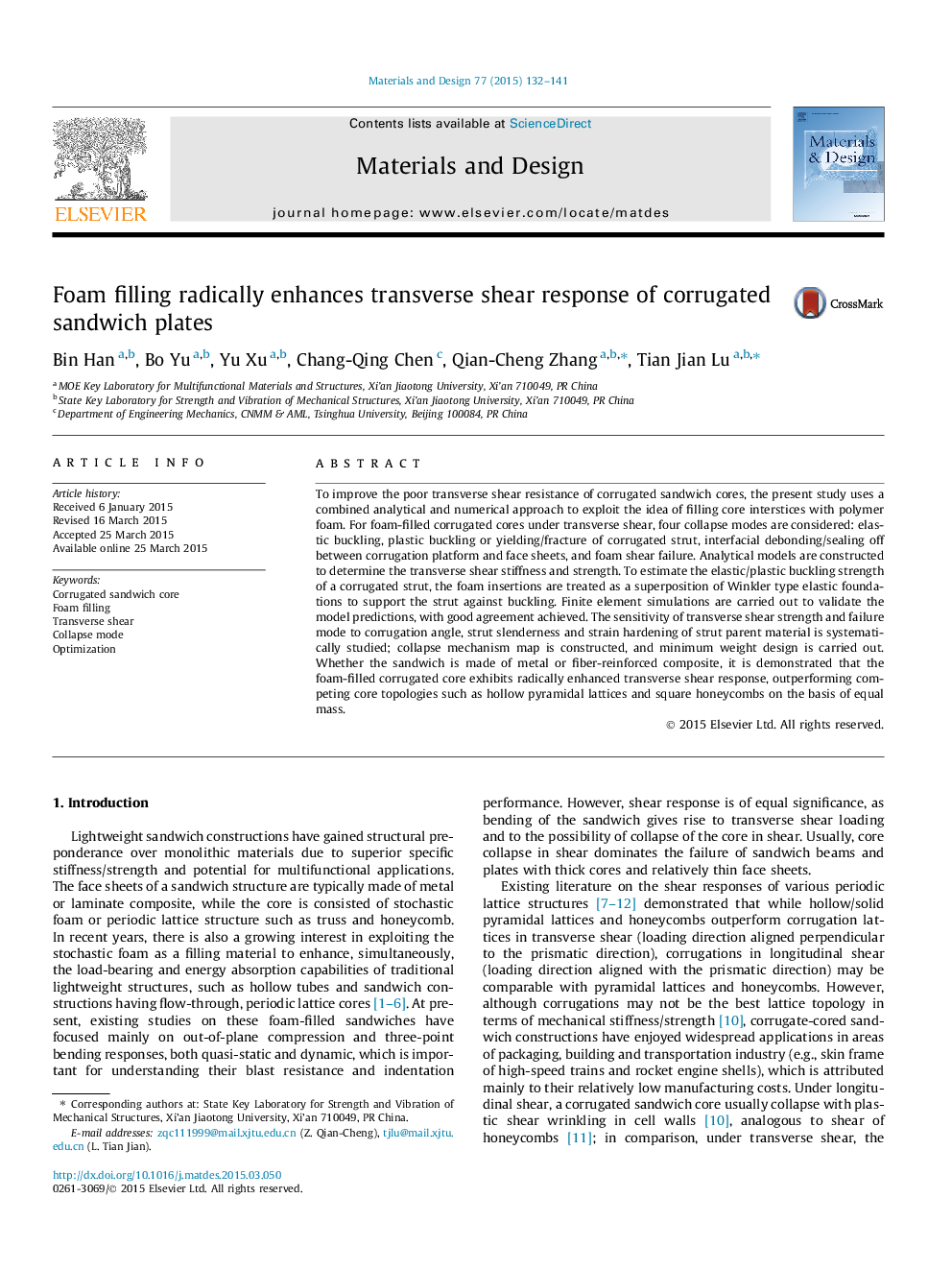| Article ID | Journal | Published Year | Pages | File Type |
|---|---|---|---|---|
| 828593 | Materials & Design (1980-2015) | 2015 | 10 Pages |
•Transverse shear of foam-filled corrugated sandwiches is theoretically studied.•Four failure modes are considered to construct analytical models of transverse shear strength.•Foam filling leads to radically enhanced transverse shear performance.•Foam-filled corrugations outperform hollow pyramidal lattices and square honeycombs.
To improve the poor transverse shear resistance of corrugated sandwich cores, the present study uses a combined analytical and numerical approach to exploit the idea of filling core interstices with polymer foam. For foam-filled corrugated cores under transverse shear, four collapse modes are considered: elastic buckling, plastic buckling or yielding/fracture of corrugated strut, interfacial debonding/sealing off between corrugation platform and face sheets, and foam shear failure. Analytical models are constructed to determine the transverse shear stiffness and strength. To estimate the elastic/plastic buckling strength of a corrugated strut, the foam insertions are treated as a superposition of Winkler type elastic foundations to support the strut against buckling. Finite element simulations are carried out to validate the model predictions, with good agreement achieved. The sensitivity of transverse shear strength and failure mode to corrugation angle, strut slenderness and strain hardening of strut parent material is systematically studied; collapse mechanism map is constructed, and minimum weight design is carried out. Whether the sandwich is made of metal or fiber-reinforced composite, it is demonstrated that the foam-filled corrugated core exhibits radically enhanced transverse shear response, outperforming competing core topologies such as hollow pyramidal lattices and square honeycombs on the basis of equal mass.
Graphical abstractFigure optionsDownload full-size imageDownload as PowerPoint slide
